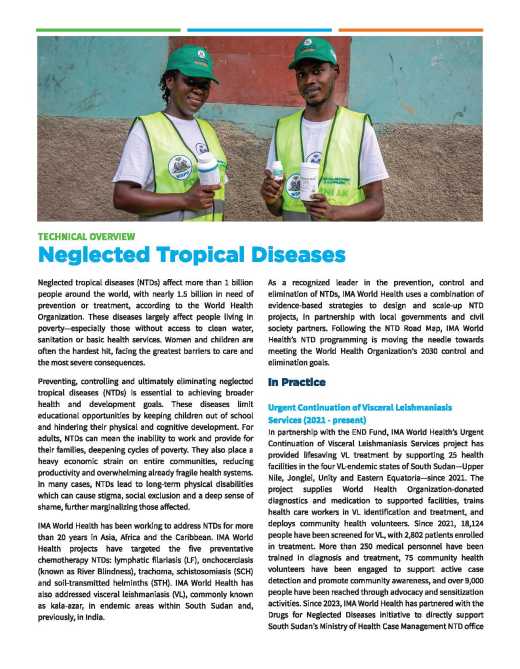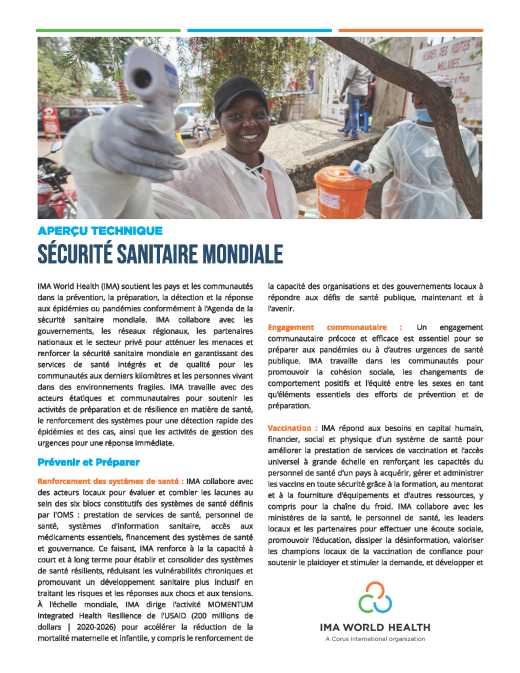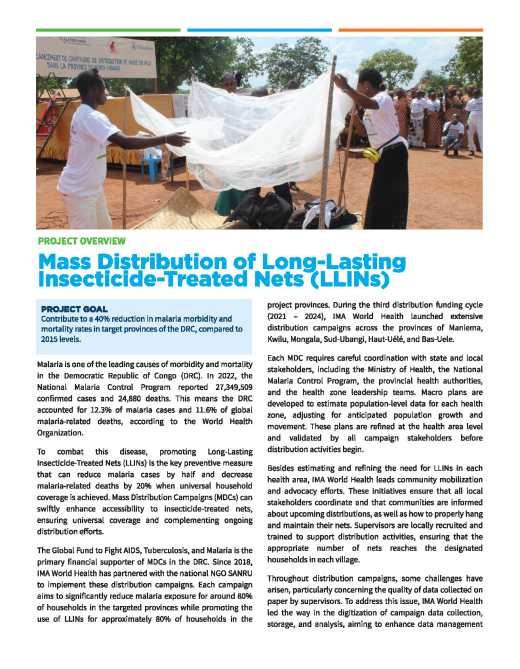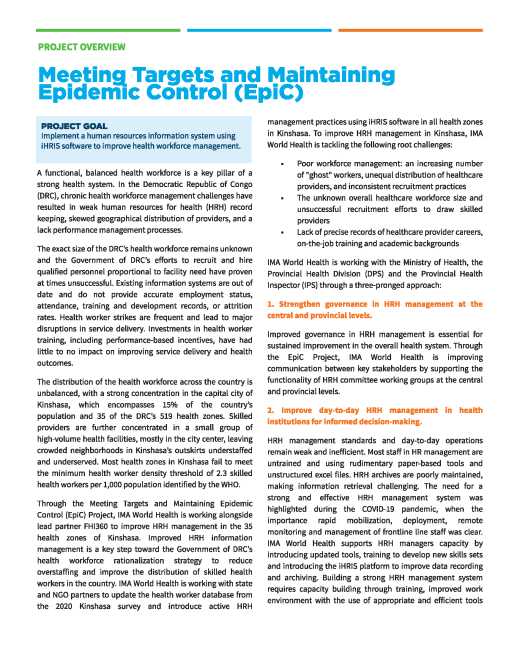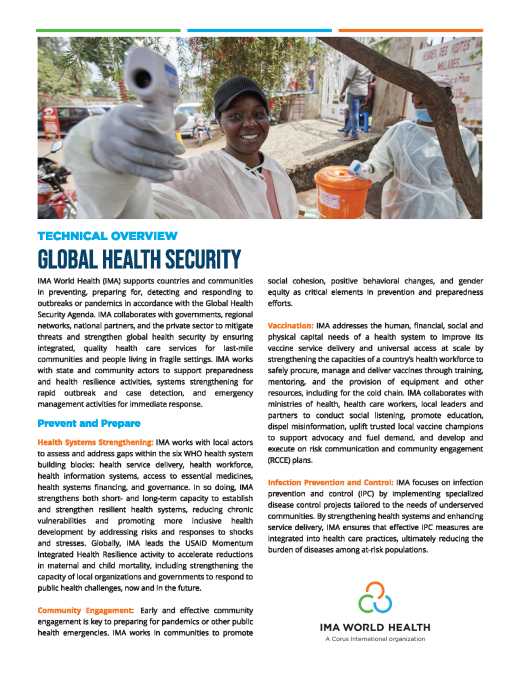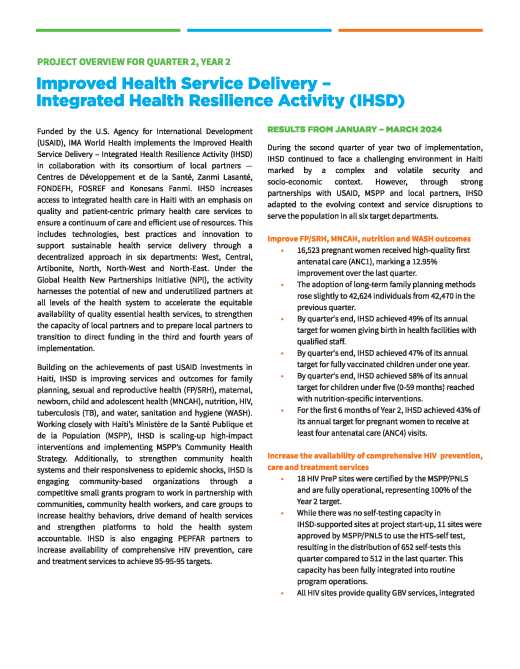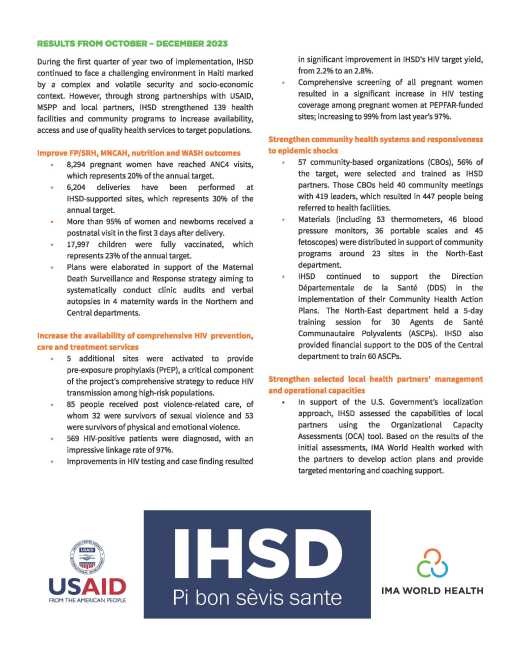Neglected Tropical Diseases
Technical Approaches
Neglected Tropical Diseases
Neglected tropical diseases (NTDs) affect more than 1 billion people around the world, with nearly 1.5 billion in need of prevention or treatment, according to the World Health Organization. These diseases largely affect people living in poverty—especially those without access to clean water, sanitation or basic health services. Women and children are often the hardest hit, facing the greatest barriers to care and the most severe consequences.
Preventing, controlling and ultimately eliminating neglected tropical diseases (NTDs) is essential to achieving broader health and development goals. These diseases limit educational opportunities by keeping children out of school and hindering their physical and cognitive development. For adults, NTDs can mean the inability to work and provide for their families, deepening cycles of poverty. They also place a heavy economic strain on entire communities, reducing productivity and overwhelming already fragile health systems. In many cases, NTDs lead to long-term physical disabilities which can cause stigma, social exclusion and a deep sense of shame, further marginalizing those affected.
IMA World Health has been working to address NTDs for more than 20 years in Asia, Africa and the Caribbean. IMA World Health projects have targeted the five preventative chemotherapy NTDs: lymphatic filariasis (LF), onchocerciasis (known as River Blindness), trachoma, schistosomiasis (SCH) and soil-transmitted helminths (STH). IMA World Health has also addressed visceral leishmaniasis (VL), commonly known as kala-azar, in endemic areas within South Sudan and, previously, in India.
As a recognized leader in the prevention, control and elimination of NTDs, IMA World Health uses a combination of evidence-based strategies to design and scale-up NTD projects, in partnership with local governments and civil society partners. Following the NTD Road Map, IMA World Health’s NTD programming is moving the needle towards meeting the World Health Organization’s 2030 control and elimination goals.
Download Now Jan 26, 2024

